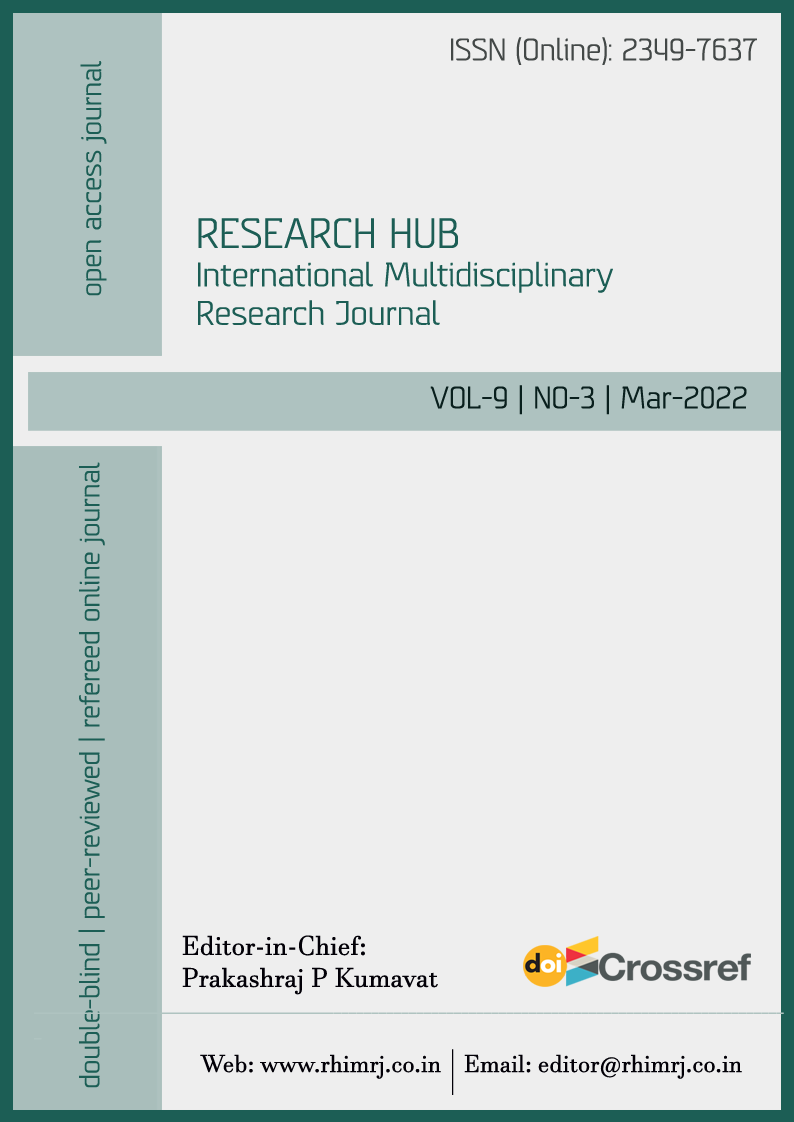The tragedy of Dalit life in the story 'Mohandas'
‘मोहनदास’ कहानी में दलित जीवन की त्रासदी
DOI:
https://doi.org/10.53573/rhimrj.2022.v09i03.009Keywords:
Dalit, Tragedy, Intellectual, Harijan, Neo-Buddhist, Landless, YayavarAbstract
In the story 'Mohandas' written by Uday Prakash, there is a very poignant depiction of grief, mental torture, struggle, annoyance, helplessness and helplessness. The story of the barbarism, immorality and downfall of the autocratic rulers is told very briefly in this long story. But being told very clearly, it gives a sharp edge to the poignancy of the story. This story is the story of the blunting of human sensibilities, the degradation of humanity. Strengthening the tradition of Hindi long story, this story depicts the real picture of our society and stays in the mind for a long time after reading. This story is so influential that for the first time in its history, the Sahitya Akademi made a story the basis of its honor.
Abstract in Hindi Language:
उदय प्रकाश लिखित कहानी ‘मोहनदास’ में दुःख, मानसिक प्रताड़ना, संघर्ष, खीज, बेबसी और लाचारी का बड़ा मार्मिक चित्रण हुआ है। इस लंबी कहानी में निरंकुश शासकों की बर्बरता, अनैतिकता और पतन की कथा बहुत संक्षेप में कही गई है। परंतु बहुत स्पष्ट रूप से कही जाने के कारण कहानी की मार्मिकता को तीखी धार देती हैं। यह कहानी मानवीय संवेदना के कुंद होने की, मनुष्यता के क्षरण की कहानी है। हिंदी की लम्बी कहानी की परंपरा को मजबूती देती यह कहानी हमारे समाज की यथार्थ तस्वीर दर्शाती है और पढ़ने के बाद एक लंबे समय तक जेहन में रहती है। यह कहानी इतनी प्रभावशाली है कि साहित्य अकादमी ने अपने इतिहास में पहली बार किसी एक कहानी को अपने सम्मान का आधार बनाया।
Keywords:दलित, त्रासदी, बुद्धि-लब्धि, हरिजन, नवबौद्ध, भूमिहीन, यायावर।



